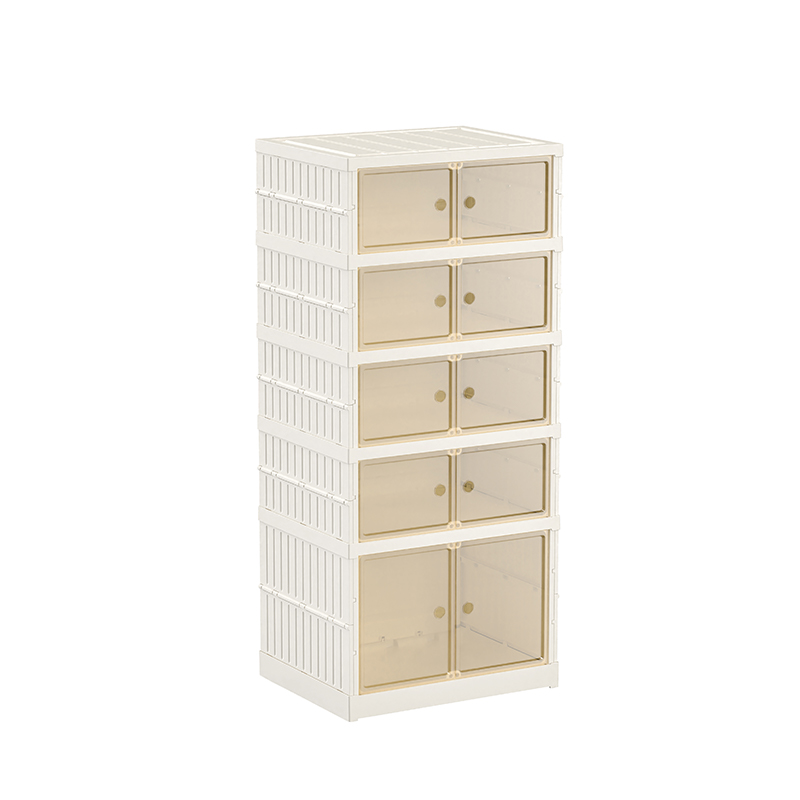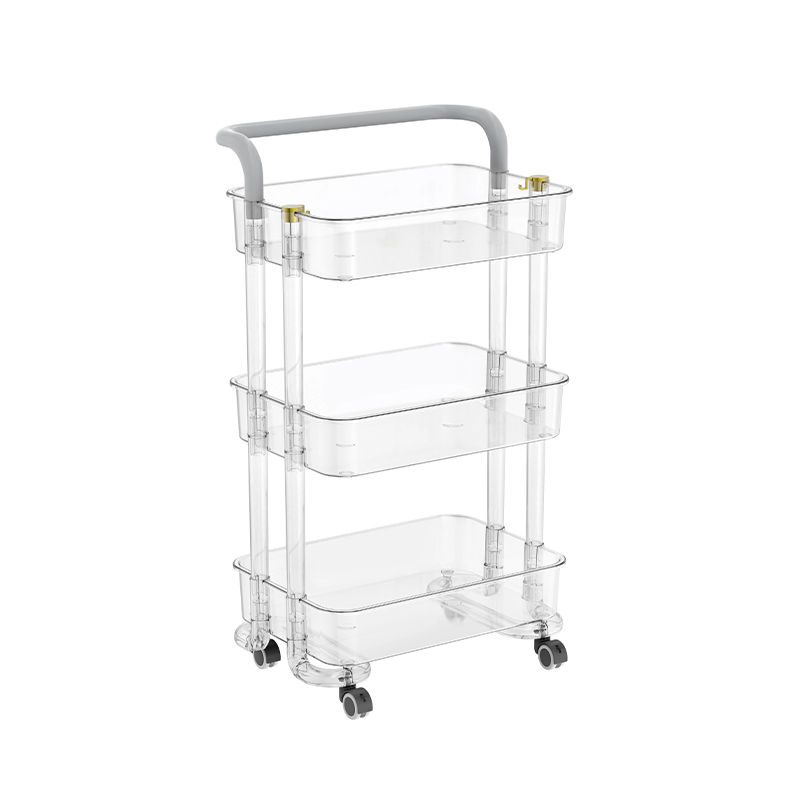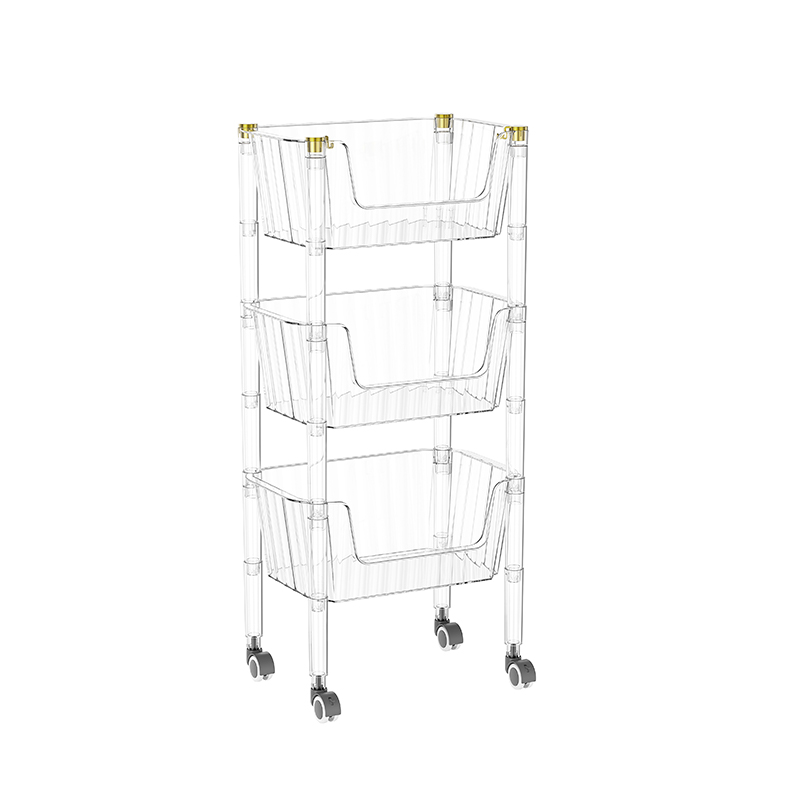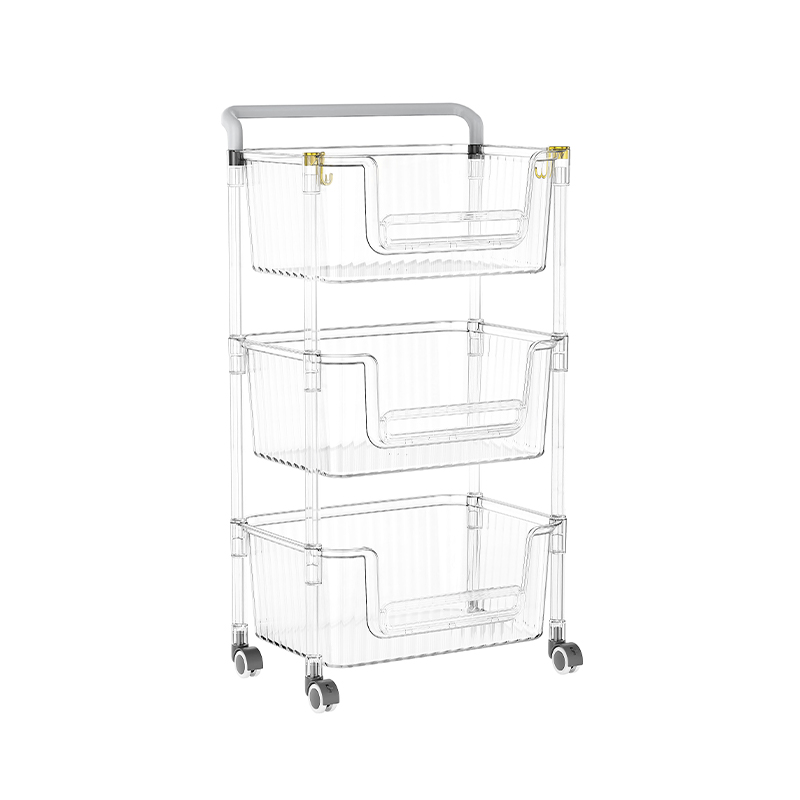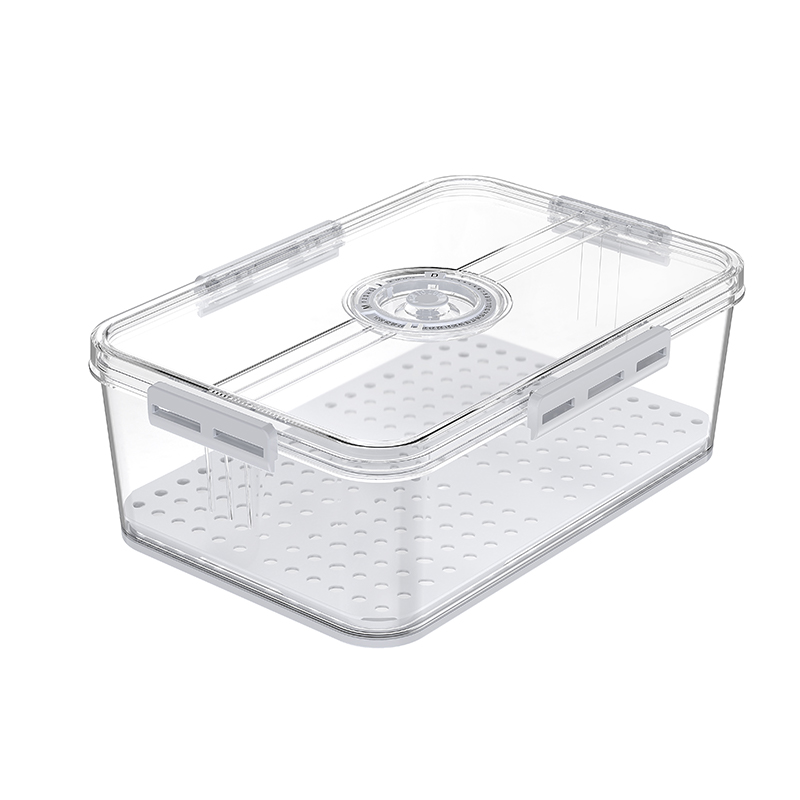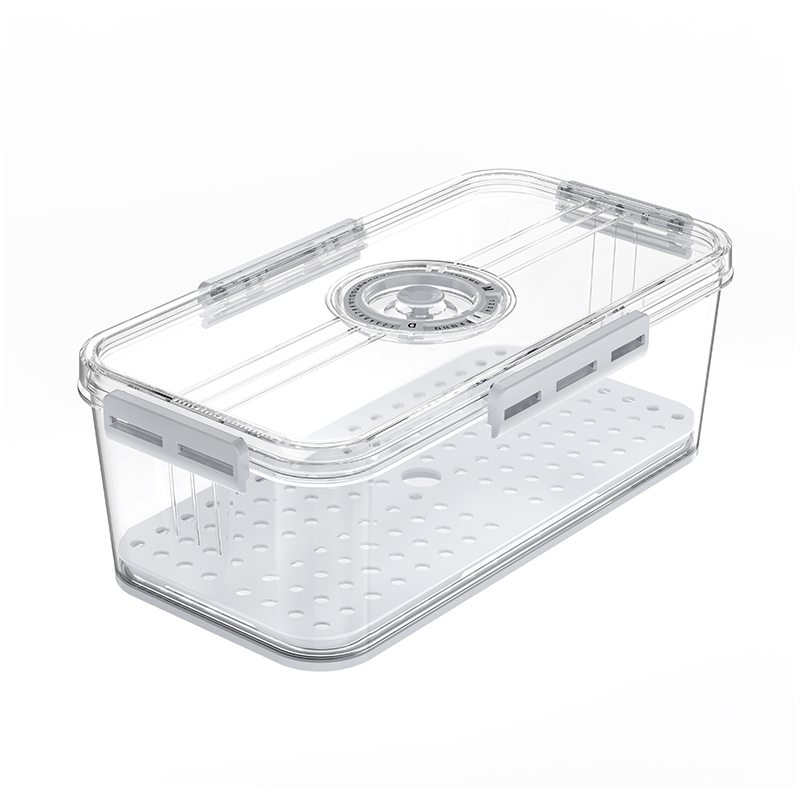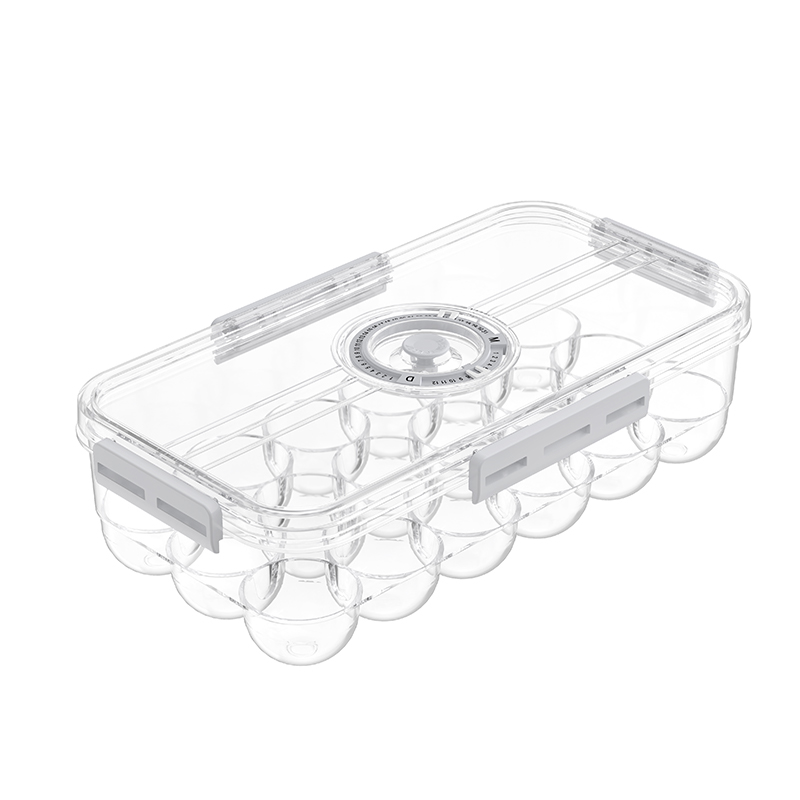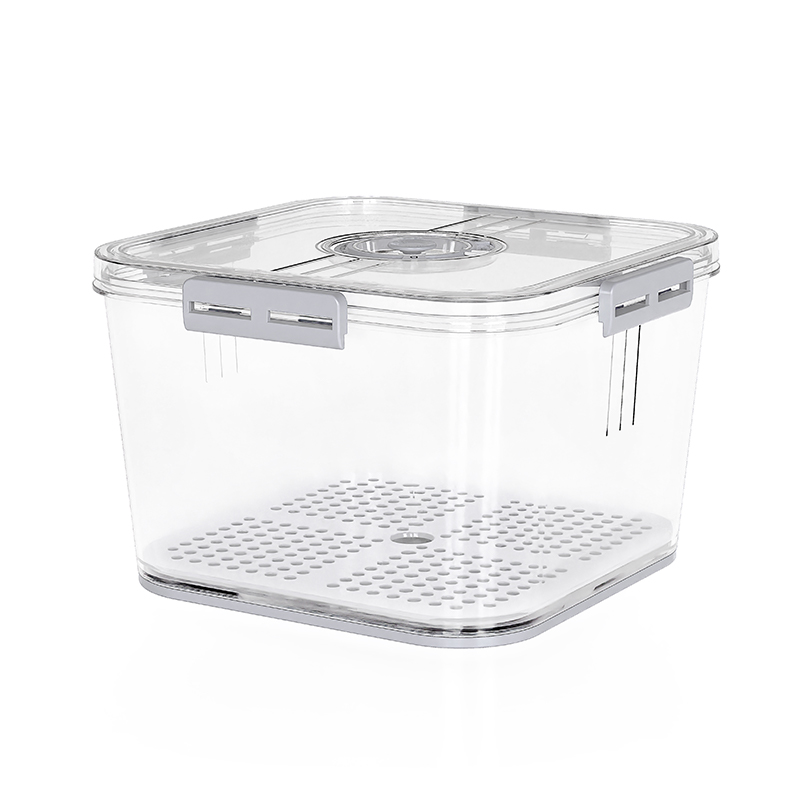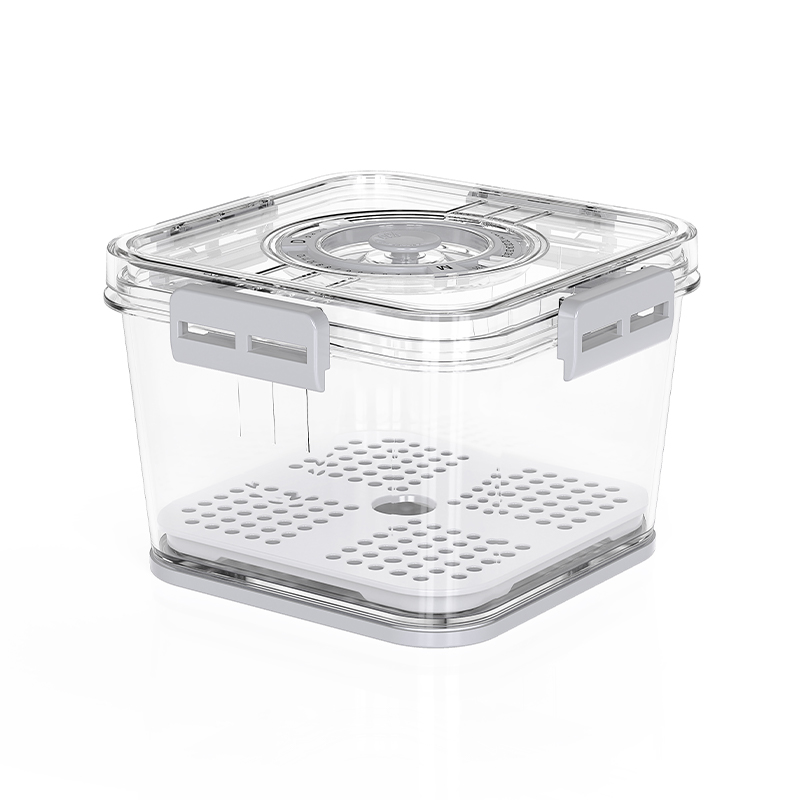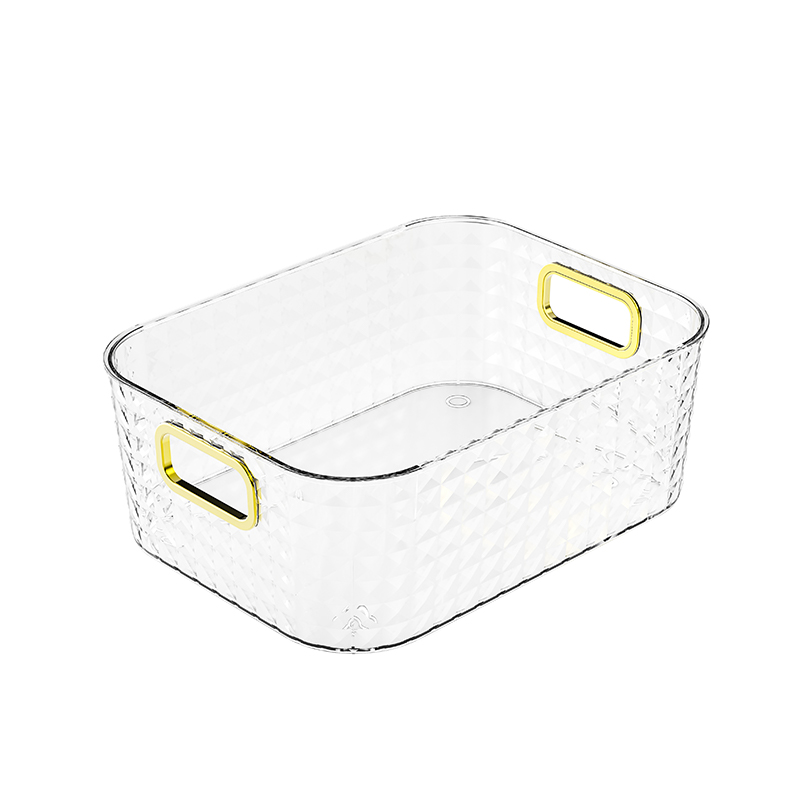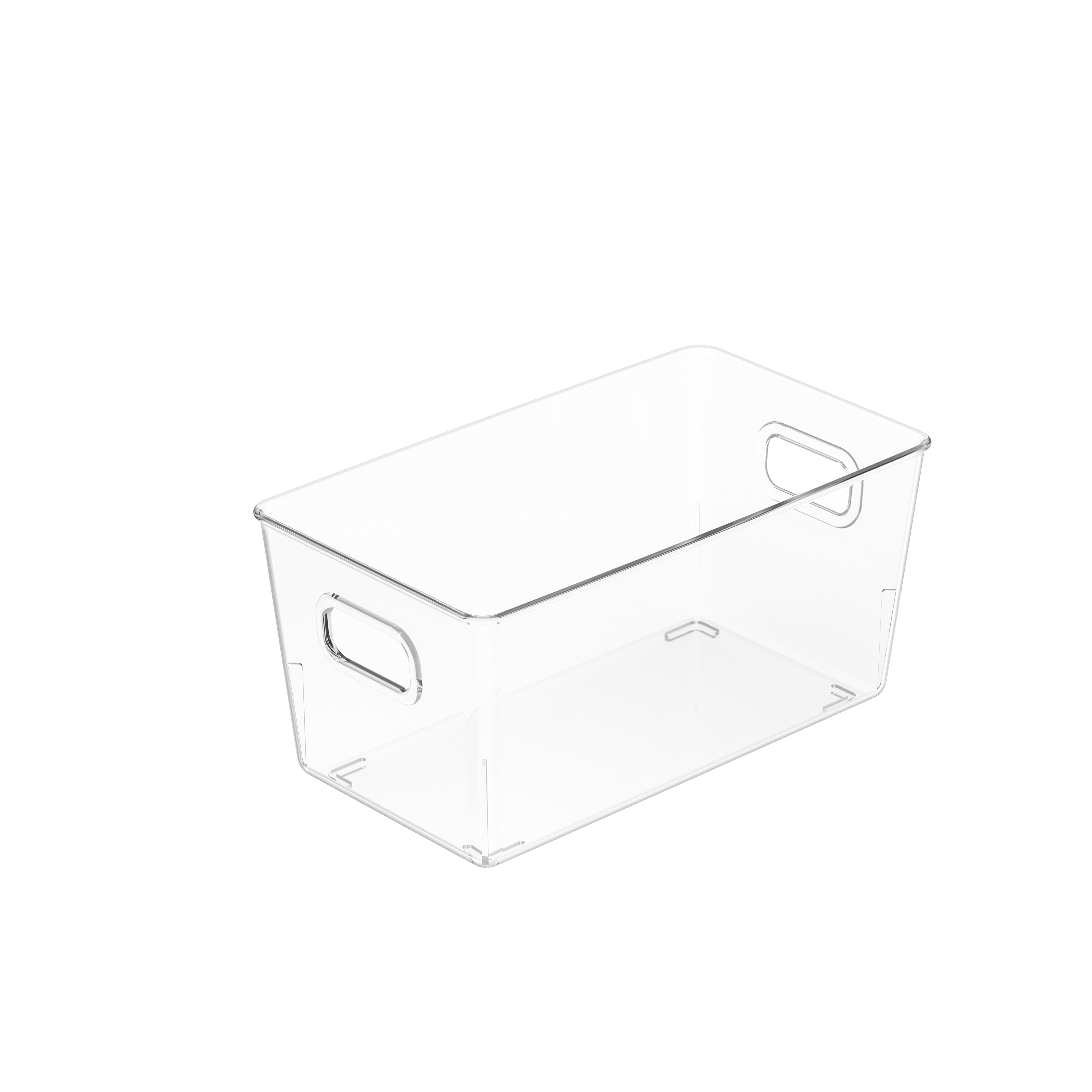Deformation phenomenon and causes of long-term use of sealing fresh food boxes
It is common for sealing fresh food boxes to deform after long-term use. The main reason is closely related to the physical properties of the materials and the use environment. sealing fresh food boxes are mostly made of plastic materials, such as PP (polypropylene), PC (polycarbonate) or silicone, which are prone to deformation under high temperature, strong sunlight or repeated mechanical stress. Especially when heated in a microwave oven, washed in a dishwasher or squeezed during storage, the molecular chain structure of the plastic may be destroyed, causing the box body or lid to expand, warp, twist and other deformation phenomena. In addition, the sealing ring is usually made of silicone. After long-term use, the elasticity of silicone may weaken, thereby affecting the sealing effect. Long-term deformation not only affects the user experience, but may also cause a decrease in sealing performance, thereby affecting the preservation effect of food.
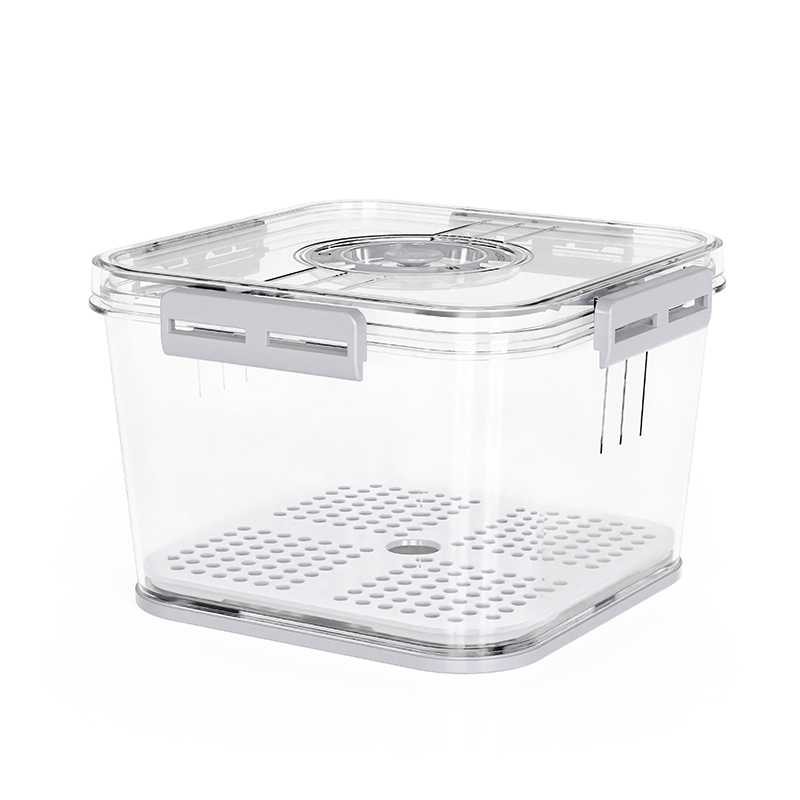
Common manifestations of damage to sealing fresh food boxes after long-term use
During long-term use, the damage of sealing fresh food boxes manifests itself in various forms. Cracks, breaks or scratches may appear on the box body, especially in areas that are frequently opened and closed or subjected to greater force, material fatigue is prone to occur. Due to repeated opening and closing, the lock of the lid is prone to loosening or breaking, resulting in failure to lock firmly and affecting the sealing. The sealing ring is prone to cracks, hardening, adhesion and other problems, further weakening the ability to isolate air and moisture. A damaged fresh-keeping box not only poses a safety hazard, such as plastic fragments contaminating food, but also may cause food to deteriorate faster due to sealing failure. Users should pay attention to these signs of damage in daily use and replace damaged parts or the entire product in time.
Analysis of factors affecting the durability of sealing fresh food boxes
The durability of sealing fresh food boxes is affected by many factors. Material quality is fundamental. The heat resistance, cold resistance and chemical corrosion resistance of food-grade plastics and silicone directly determine the service life of the fresh-keeping box. Secondly, the use environment has a significant impact on durability. For example, frequent exposure to high temperature (microwave heating), low temperature (freezer), strong ultraviolet rays or chemical cleaning agents will accelerate material aging. Usage habits are also important. Rough opening and closing, excessive squeezing, and hard impact can easily cause mechanical damage. In addition, the cleaning method has a great impact on material damage. Strong acid and alkali cleaning agents and high-temperature dishwasher cycles may damage the physical properties of the sealing ring and the plastic box body. Reasonable use and maintenance can delay the occurrence of damage and extend the effective use time of the fresh-keeping box.
Comparison of the durability of sealing fresh food boxes of different materials
The common materials of sealing fresh food boxes on the market include PP plastic, PC plastic and food-grade silicone. There are certain differences in the durability of different materials. PP plastic has good heat resistance and chemical corrosion resistance, and is relatively cheap, but it is prone to aging and brittleness. PC plastic has high strength and good transparency, but it is sensitive to ultraviolet rays and may turn yellow and crack after long-term use. Food-grade silicone is mainly used for the sealing ring part. It has good elasticity and temperature resistance, but it is easy to harden or stick due to improper cleaning. The following table compares the main properties of different materials to help understand their durability characteristics.
| Material Type | Heat Resistance Range | Cold Resistance Range | UV Resistance | Elasticity | Vulnerable Parts |
|---|---|---|---|---|---|
| PP Plastic | -20°C to 120°C | -20°C | Moderate | Moderate | Prone to aging and brittleness |
| PC Plastic | -40°C to 130°C | -40°C | Poor | Better | Prone to yellowing and cracking |
| Food-grade Silicone | -60°C to 230°C | -60°C | Good | Good | Prone to hardening and sticking |
Safety issues after long-term use of sealing fresh food boxes
With the long-term use of sealing fresh food boxes, deformation and damage may cause certain safety hazards. The sealing of the deformed box lid decreases, and air and bacteria are more likely to enter, causing food to spoil or even produce harmful substances. In addition, broken plastic fragments may be mixed into food, increasing the risk of ingesting foreign matter. Some inferior materials may release harmful chemicals under high temperature conditions, which may affect human health. For this reason, consumers should pay attention to purchasing products that meet food safety standards and avoid using fresh-keeping boxes with obvious deformation, cracks and sealing failure. Regularly replacing fresh-keeping boxes is not only a necessary measure to ensure food safety, but also improves the overall user experience.
The importance of maintenance and maintenance measures to extend the life of sealing fresh food boxes
Proper maintenance and maintenance can effectively extend the service life of sealing fresh food boxes. Avoid violent opening and closing and excessive squeezing during use to prevent the product from being damaged due to excessive mechanical stress. During the cleaning process, mild detergents and appropriate water temperatures should be selected, and hand washing is preferred to reduce the damage to the seal and plastic caused by the high-temperature cycle of the dishwasher. Avoid long-term exposure to sunlight or high temperature environments to prevent accelerated aging of materials. Regularly check the integrity of the seal and lock, and replace them in time if they are found to be aged, hardened or damaged. Reasonable storage to avoid stacking heavy objects to compress the fresh-keeping box. The above measures can delay the occurrence of deformation and breakage and improve the overall durability of the sealed fresh-keeping box.
Comparison of durability evaluation of common sealing fresh food boxes on the market
sealing fresh food boxes of different brands and models have differences in durability, which are mainly reflected in material selection, process manufacturing and design details. High-end products usually use higher-quality materials and structural designs, with better elasticity of the sealing ring, thick box material and strong impact resistance; mid- and low-end products may lack in these aspects and are prone to deformation and breakage. The following table briefly compares the durability performance of several common fresh-keeping boxes on the market.
| Product Model | Main Material | Seal Ring Material | Box Thickness | Deformation Resistance | Typical Service Life |
|---|---|---|---|---|---|
| Model A | Food-grade PP | Food-grade Silicone | Thick | Better | 2-3 years |
| Model B | Food-grade PC | Food-grade Silicone | Medium | Moderate | 1.5-2 years |
| Model C | Ordinary Plastic | Ordinary Rubber | Thin | Poor | Less than 1 year |

